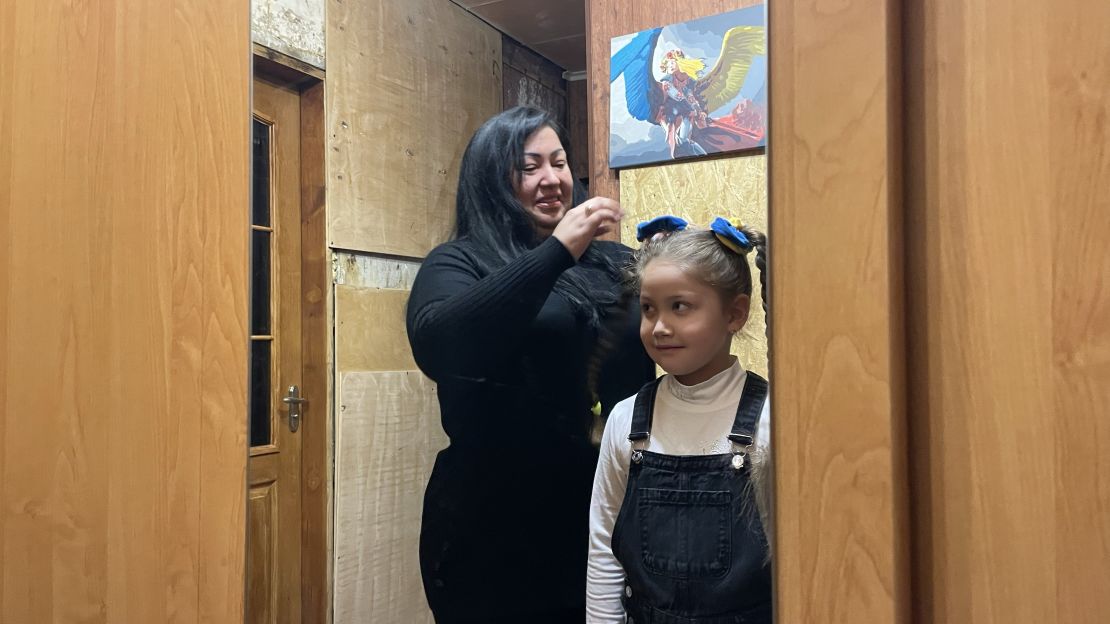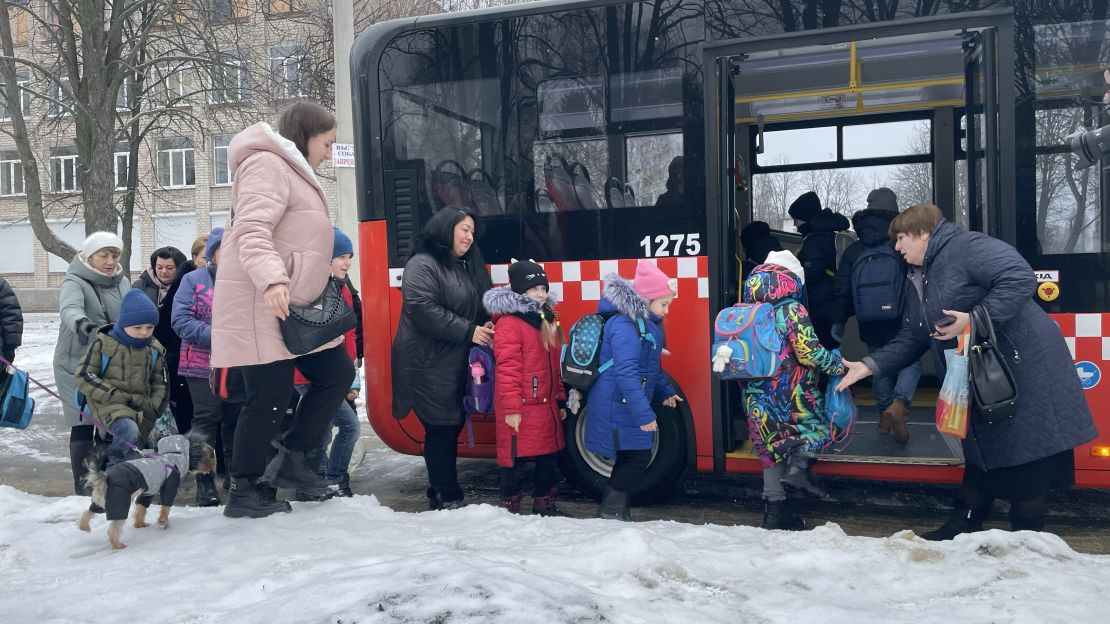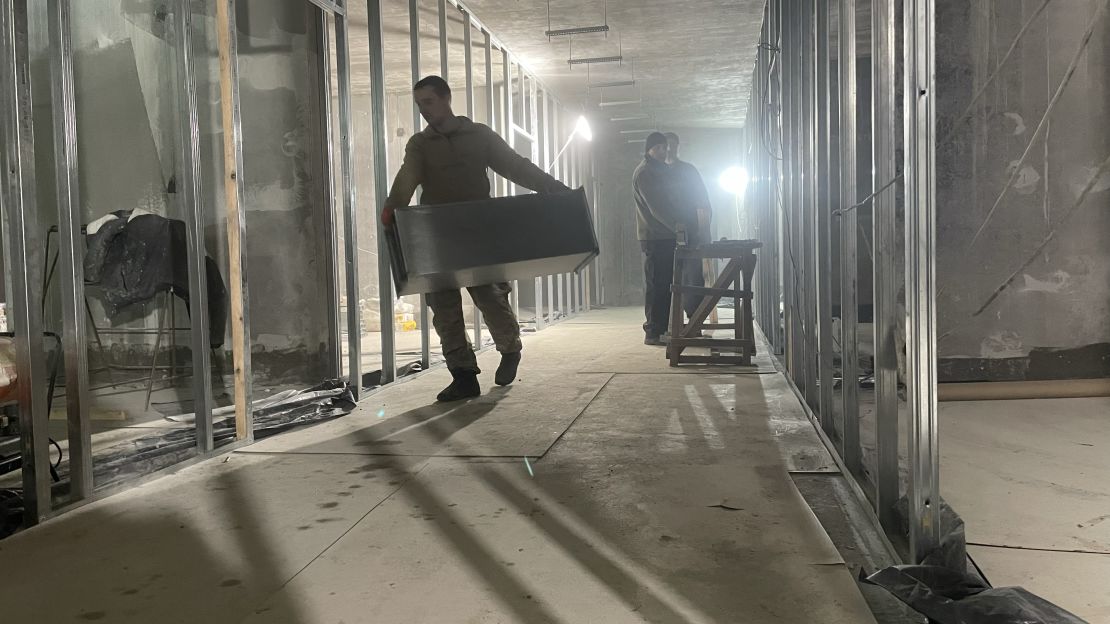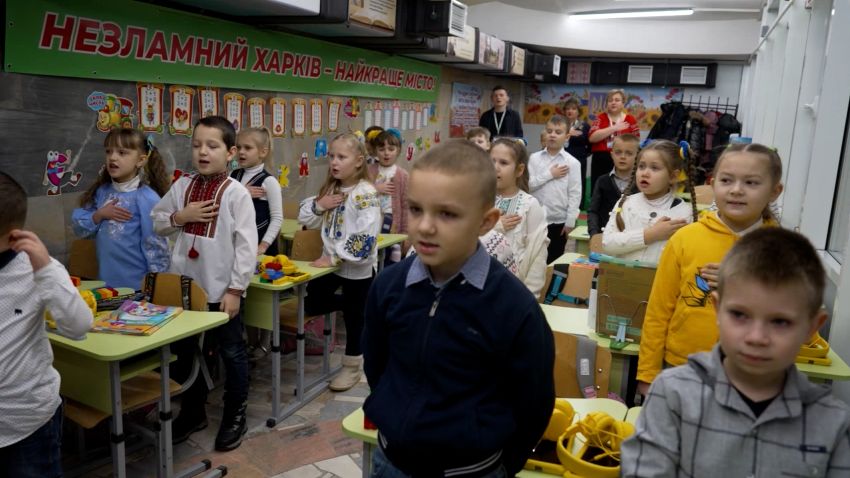It was a special day for Elmira Dergousova when Russian tanks rolled across the border into Ukraine: her fifth birthday.
A plastic crown perched on her head, she blew the candles out on her “Frozen” cake.
Her mom quickly took a picture – the uncertainty and fear in Elmira’s smile all too obvious – before they hurried down to the basement.
Russian shells were already landing in the streets.
Life for children across Ukraine has changed immeasurably since that day in February 2022. For those in the northern city of Kharkiv, just miles from the Russian border, it changed more than most.
Despite almost daily Russian shelling and missile strikes, the city has recovered an uneasy normalcy, with some residents returning, shops open and life going on.
But the fear of seemingly random Russian strikes makes school too much of a risk. None of the city’s schools are still used for lessons as it’s too dangerous. The city has looked underground, to the subway and newly built bunker schools to protect children as they learn.
“Here we won’t hear anything. We won’t hear the bangs,” Elmira told CNN from her classroom, cloaked in double glazed windows that help dampen the noise of the world outside.
‘They get used to it somehow’
Nestled in an old pedestrian tunnel, a few feet under the tarmac of the road above, the classrooms are cozy and colorful.
Gaudy cartoon characters and multiplication tables line the walls, while a banner reads “Indestructible Kharkiv.”
In a corner Lego and toys – their subterranean playground – sit ready for recess. But first, the national anthem plays, signaling the start of the school day.
“I love Ukraine because of nature,” Elmira told CNN from the classroom, “We have different creatures that are not in other countries. And we were probably attacked because of that.”
It’s a moment of innocence, safe within the walls of her new school.

But she knows what war means all too well, her father is fighting on the front lines and she was a refugee in Poland with her mom for a year.
In Kharkiv, air raid sirens sound sometimes more than a dozen times a day, Elmira’s mother Olena Dergousova told CNN. Virtually every house was hit in her neighborhood in the opening months of the 2022 invasion, she said.
Given the limited space in the metro school, Elmira is forced to study from home every other day. She uses software and tablets pioneered during the Covid-19 pandemic.
Nearly 2,200 children attend classes in the metro school’s five sites in stations across Kharkiv, up from 1,000 in September when they opened, according to Kharkiv’s city hall, solely at their parents’ request.
In total, 106 classes of children through grades 1-11 rotate through the 19 metro classrooms. That’s a fraction of the tens of thousands of school age children in the city, according to the city’s mayor.
But studying underground means a school day without disruption, safe from the bombs and the fear of the sirens.
“The kids are probably getting used to it by now,” Elmira’s teacher Olena Rudakova said. “They get used to it somehow.”
Death from above
An S-300 missile – favored by Moscow for attacking Ukrainian cities and infrastructure – takes under 40 seconds from launch to striking Kharkiv, the city’s Mayor Ihor Terekhov told CNN.
“No air raid alert can work,” he said.
Despite the proliferation of emergency shelters across Ukraine, concrete rooms visible on streets throughout towns and cities, civilians are far from safe from Russian air attacks.
“If earlier they shot at the energy infrastructure, today they hit in such a way as to intimidate people. They shoot at the housing stock, at the private sector, at residential buildings and there are a lot of victims,” Terekhov said.
Elmira’s old school, now boarded up, was hit by Russian shelling in the opening months of the war. Families were sheltering in the basement at the time but thankfully none were hurt.
Many haven’t been so lucky.

At least 10,000 civilians, including more than 560 children, have been killed since Russia launched its full-scale invasion of Ukraine in February 2022, the United Nations Human Rights Monitoring Mission in Ukraine said in November.
More than 18,500 people have been injured.
The UN believes the true figures are likely significantly higher due to the challenges and delays involved in verifying deaths in areas of ongoing hostilities.
With space already at a premium in the city’s metro system – in 2022, some 160,000 people were sheltering in stations, according to a Karkhiv city’s education department - last year Kharkiv’s mayor commissioned a purpose-built underground school.
The school – set to open in March – looks like a bunker.
Spanning about a football field, the one-story structure was still a shell when CNN visited in January, but administrators were already planning the color of the classroom walls.
From the lighting and noise insulation to the ventilation, the school administrators have poured over plans to make the site, which will house 450 students, as comfortable and enjoyable for pupils as possible.
“The lungs must breathe as they do in the fresh air, it’s very important,” Terekhov said of the school’s future students.

‘They have grown up’
In the metro station, a psychologist is now part of the staff, an essential pillar of war-time teaching.
“Children have survived explosions, experienced difficult moments, and the death of relatives; it is very difficult for them,” Elmira’s teacher Rudakova told CNN between classes.
Once her students returned to classes last September, the change was impossible to miss.
“When we looked at their faces, they were already grown children returning.
They had the look of adults who had already experienced hardships,” she said.
“They have grown up.”
Play is central to the syllabus, Rudakova said, as they try to make learning as enjoyable as possible.
The teachers dance a careful ballet around topics that could unsettle their students. In classes where children have lost their fathers, mentions of dads are carefully navigated, Rudakova told CNN.
School is now more important than ever, Rudakova said. But as much as the metro school is a haven, it’s not the school the kids really want.
“They always say that they want peace and to return to their old school, which has everything for children: play areas, a sports hall, and a dining room,” Rudakova said.
“They understand what’s going on.”






